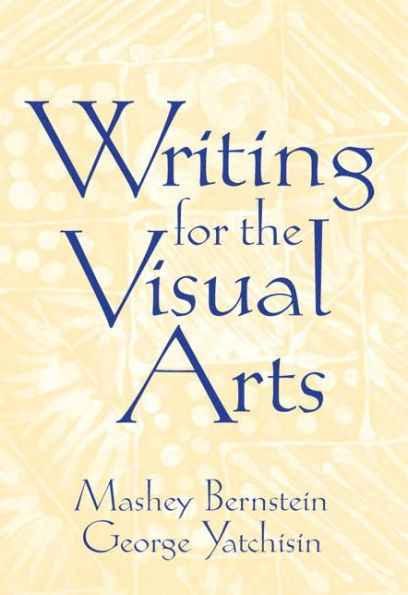PREFACE TO THE STUDENT
We based this handbook on our experiences over the past decade teaching a course entitled 'Writing for the Visual Arts' that we developed at the University of California, Santa Barbara. The course appeals to our students because it allows them to think and write like professional artists, not just artists-in-training. We also devised a curriculum directly pertinent to them, teaching students to handle tasks they will confront in the world beyond college. This handbook has the same intent.
As beginning artists, you probably don't realize the amount of writing you will have to produce: grant proposals, resumes, letters of application, descriptions of your work, and so on. Your art, in itself, will not always speak for you. Our purpose in this handbook is to help you, the evolving artist, learn to articulate your concepts and ideas, and also to argue for and earn your place in the world of art.
We define visual arts not only in its most traditional sense-painting, sculpting, collage, drawing, graphic arts, architecture-but also in ways that include film and theater. Our examples of artists and their works, taken from amateur as well as professional sources, run the gamut of these arts. Students in art history, dramatic arts, communications, and English will also benefit from this text.
In essence, we see this book as a kind of how-to, taking you from the writing you have to produce in college to writing you will encounter as professionals in the field. In this light, we present each chapter as a discrete unit, a particular lesson for a specific rhetorical situation. That said, of course the lessons in each chapter overlap and reinforce each other. We begin with the academic paper. In the Chapter 2 we discuss how to write about one's own art. Next the book moves into areas that will impact on you as you enter the marketplace: chapters on writing resumes, letters of application, manifestos, and press releases. Chapter 8 covers writing grants and proposals. In all the chapters, we deal with the general rhetorical and grammatical skills that underpin all types of art writing.
ACKNOWLEDGMENTS We would like to thank the faculty of the Writing Program at the University of California, Santa Barbara for encouraging the development of writing classes that extend the range of possibilities in the discipline. We would also like to thank our students, who provided such positive feedback to our course and especially to those students whose writing appears in this text. Thank you to the reviewers for their valuable comments: Cynthia Maris Dantzic, Long Island University-Brooklyn and Wayne Enstice, University of Cincinnati.
Mashey would like to thank Joan Worley who first taught the class at UCSB and George offers his special thanks for the ever-lasting, ever-wonderful support of Amy Esau, spouse nonpareil.
Mashey Bernstein and George Yatchisin
University of California, Santa Barbara






